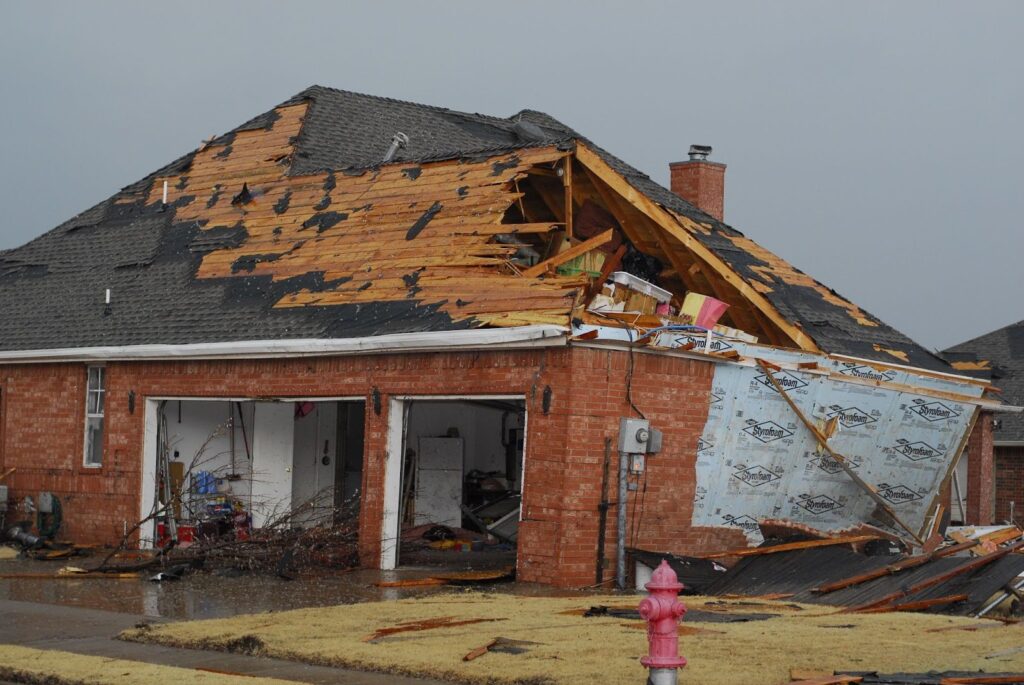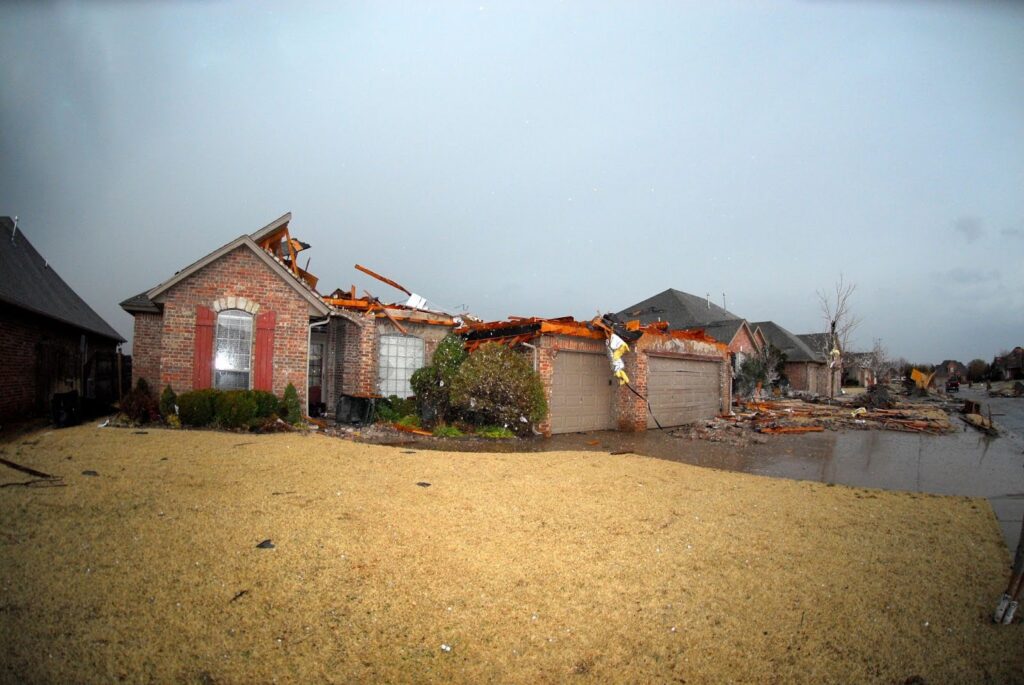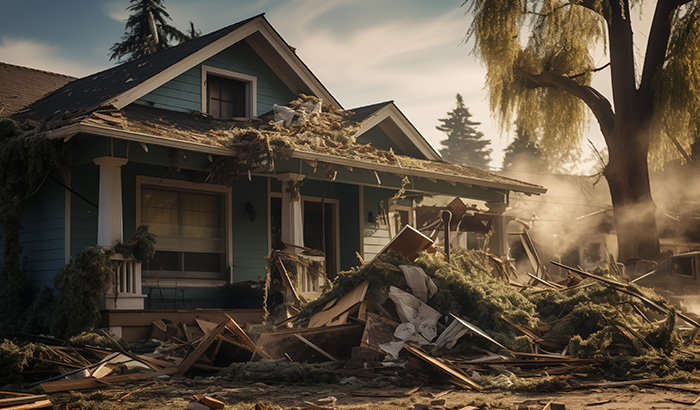Natural disasters are hazardous and scary, but knowing what to do before and after storm damage hits can make all the difference in recovery.
Severe storms can impact anything from your floors and furniture to your vehicles and wallet. As daunting as storm damage restoration is, you can find solace in knowing that many have gone through similar experiences. Heeding these insights will help with preparation and allow life to swiftly return to normalcy once the storm has passed.
Today, we’re diving deep into the world of storm damage mitigation, including what it is and 10 signs your community needs it.
What Qualifies as Storm Damage?
Storm damage entails any destruction caused by a storm. There are several categories of storms, including high winds, floods, hurricanes, thunderstorms, tornadoes, wildfires, and more. These storms pass through, leaving a trail of physically and emotionally devastating destruction. The aftermath of such storms can take several weeks to years to recover from.
Storm damage can occur anywhere, at any time, and the limit of such damage doesn’t exist. The effects can impact homes, businesses, cars, belongings, and other property.
Here are several circumstances that qualify as storm damage:
- Structural damage (broken windows, collapsed walls, roof storm damage, etc.)
- Flooding
- Wind damage (broken branches, uprooted trees, down power lines, etc.)
- Storm surges
- Flying debris impact
- Soil erosion
- Power outages
- Vehicle damage
- Infrastructure damage (roads, bridges, etc.)
In the face of these destructive forces, storm damage mitigation is crucial to minimize the impact and protect lives and property. Here are 10 signs you need to pursue storm damage restoration.

1. Frequent Storms in the Area
If you live in an area prone to frequent storms, storm damage restoration measures should be a priority. Understand your local climate, typical weather patterns, and what to expect during each season. This will help you determine the level of risk when storms strike and the necessary mitigation steps.
For example, if you live in the section of the Midwest known as “Tornado Alley,” you’ll want to prepare a tornado-safe room in your home and safeguard against roof storm damage from high winds. If you live in an area prone to severe winter storms, you should prepare your vehicle’s tires, keep an ice scraper in your car, and stock up on ice melt and non-perishable foods.
Some 98% of all nationally declared disasters are weather-related, leading to nearly $15 billion in damage and 500 deaths each year. Proactivity is the best way to safeguard yourself and your property against a storm’s wrath.
2. History of Storm Damage
If your community has a history of severe weather and extensive property loss, this is another sign that mitigation efforts are needed. Even if these events happened long before you moved in, a restoration professional can determine if further mitigation is necessary.
Past events can provide valuable insights into the vulnerabilities of the area. For example, communities that have endured high winds and structural damage due to hurricanes can learn from those experiences. They can use these insights to enhance building codes and ensure the resilience of homes and infrastructure against the elements.
By studying past weather events, local authorities and residents can tailor their storm damage mitigation strategies to address specific threats unique to their geographic location. This will create a stronger and safer community for all residents and visitors.
3. Proximity to Coastal Regions
Coasts are a popular and desirable place to live with their beaches, sunshine, and stunning views. Unfortunately, coastal regions are also vulnerable to storm surges and hurricanes. Here are some common mitigation measures coastal regions practice to safeguard their communities:
- Constructing seawalls
- Elevating buildings
- Implementing early warning systems
- Widening beaches through beach nourishment
- Dune restoration projects
- Creating stormwater management systems
- Community education and outreach
4. Aging Infrastructure
Aging infrastructure, such as bridges, dams, and levees, is a red flag that communities shouldn’t ignore. Compromised structures are more susceptible to storm damage. Investing in upgrades and maintenance is critical if your community’s infrastructure is outdated or impaired. These efforts will protect your town against potential storm damage-related disasters.
5. High Population Density
Areas with high population density face increased risks during storms. The potential for more extensive property damage and a higher number of lives at stake can be a lethal combination; however, the impact largely depends on how well-prepared the community is in the face of storms.
High population density often means more buildings, infrastructure, and valuable assets concentrated in a designated space. This can increase the potential for widespread damage during storms. A higher population also poses a strain on resources and the responsiveness of emergency response teams.
Conversely, high population density can positively impact storm damage mitigation when the community is well-prepared and organized. The density of people in an area often contributes to more effective mitigation efforts like efficient communication, investments in resilient infrastructure, and a higher accessibility to essential services.
6. Poorly Constructed Buildings
As you can imagine, poorly constructed buildings don’t hold up well in the face of severe weather. Poor construction can suffer severe consequences after a storm such as collapsed walls, roof storm damage, down power lines, gas leaks, injuries, and fatalities. These risks underscore the critical need for proper construction practices and building standards.
Storm preparation efforts should center around improving compromised homes and buildings.
Inspect your property for signs of vulnerability — an aging roof, cracked or uneven foundation, unsecured windows and doors, damaged siding, overhanging trees, insufficient drainage, and outdated electrical systems are all potential hazards in the face of a storm.
7. Lack of Vegetation
Vegetative covers, such as forests and wetlands, act as natural buffers against storm damage. Without these natural features, you run the risk of flooding and soil erosion. If your area lacks sufficient vegetative coverage, implementing green infrastructure initiatives can help mitigate the impact of storms.
Green infrastructure systems refer to the dozens of environmentally friendly solutions for water management. These initiatives incorporate the natural environment and engineered systems to provide clean water, conserve ecosystem values, and provide routes for excess water to traverse.
New York City, for example, has quality tap water despite frequent rain and snowstorms. This is because the city invested in water protection to ensure that polluted runoff water doesn’t enter the drinking water supply.
Another example of green infrastructure is popular in the rainy Pacific Northwest region of the United States. Oregon and Seattle use shallow, vegetated channels called bioswales to manage stormwater runoff. Bioswales help prevent flooding by slowing down, capturing, and redirecting stormwater, allowing it to be absorbed into the ground.

8. Inadequate Drainage Systems
Poor drainage systems can exacerbate the effects of storms, leading to flooding and cumbersome water damage. Signs of inadequate drainage include areas of standing water after rainfall, sudden erosion, and frequent basement flooding. Maintain your drainage systems to mitigate against potential storm damage. Here are some tips to keep your drains running smoothly:
Remove Debris
No drain can function properly with a bounty of leaves, branches, and trash in its way. Regularly inspect your drainage system and toss these clog agents out.
Check for Damage
Your drainage components will show warning signs well before disaster strikes. Cracks, leaks, erosion, standing water, and clogs on or around your drainage components are all red flags to highlight. Inspect your gutters, downspouts, and storm drains with the changing seasons to stay on top of regular drainage maintenance.
Maintain Proper Slope
Just as a skier can’t enjoy the snow without a proper slope, your drainage system needs the right angles to function. Ensure the ground around your property slopes away from your home so water can soar on by without problems. Any pooling near your foundation indicates a sloping issue that needs correcting.
9. Limited Emergency Preparedness
Communities with limited emergency preparedness plans are more vulnerable to storm-related disasters. Lack of awareness, education, and coordination can hinder effective storm response. Investing in public awareness campaigns, emergency drills, and communication systems can enhance community preparedness.
One notable example of a city with excellent emergency preparedness is Tokyo, Japan. In 2011, a 9.0 earthquake struck the northeastern coast of Japan, triggering a massive tsunami. Because Tokyo had invested heavily in disaster preparedness and had a comprehensive emergency response system in place, the impact was far less devastating than it could have been.
10. Climate Change Impacts
Climate change is linked to the increased frequency and intensity of storms. This heightens the need for exhaustive storm mitigation measures. Communities experiencing shifts in weather patterns, rising sea levels, or fluctuating precipitation should adapt their mitigation strategies to address these climate-related risks.
Contact Black Diamond Restoration for storm damage mitigation
While you may do all you can to prepare for storm damage, it can sometimes wreak serious havoc on your home. If your home has sustained damage from a natural disaster, you need the experts at Black Diamond Water Damage & Disaster Restoration.
We work tirelessly to take care of all types of damages, ranging from water, fire, and storm damage to mold remediation, sewage backup, and biohazard cleanup. You can be sure that our licensed professionals will help restore your home or commercial space to the best standards.
Contact Black Diamond Water Damage & Disaster Restoration today for all your storm damage restoration needs. With over twenty years of disaster restoration experience, we do it all, and we do it right!
toto slot






